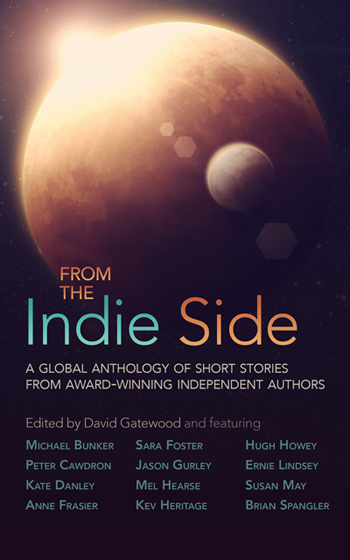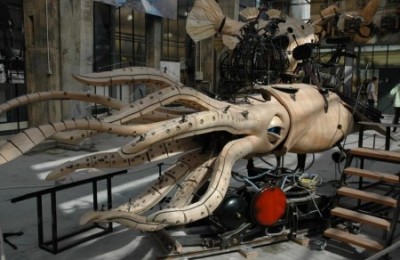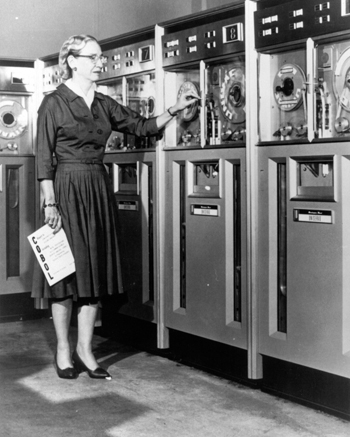amy eyrie
Tuesday, July 29, 2014
Amazon’s Objective: Lower E book Prices
In the ongoing battle of perception between Amazon and Hachette, we ve had to speculate on the substance of the conflict. An intriguing post in the Kindle Forums by the Amazon Book Team makes a bold statement to publishing and Indie authors; lower e book prices are on the table.
http://feedproxy.google.com/~r/AmyEyrie/~3/S9g5mqoHUZA/
Wednesday, July 9, 2014
Barbarians at the Gate: Indies vs Big Publishing
The Fall of Rome is still debated. How could such an empire fall? Various theories are floated; taxes were too high, barbarians joined the army, borders became too porous, corruption and incompetence were rampant. But I would argue that these were mitigating factors. Empires always fall for the same reason. They stop adapting. Adaptive Capacity [ ]
http://feedproxy.google.com/~r/AmyEyrie/~3/LEwzQKK6mvA/
Saturday, February 1, 2014
From the Indie Side: A New Anthology
 From the Indie Side is an fascinating milestone for the independent publishing movement. Why do I say that? Because if you want proof that Indie authors can write concise, beautifully turned out prose, then look no further than this collection of stories.
From the Indie Side is an fascinating milestone for the independent publishing movement. Why do I say that? Because if you want proof that Indie authors can write concise, beautifully turned out prose, then look no further than this collection of stories.
With some of the most talented new voices on the Indie scene, this anthology has the raw, electric energy of an underground movement. The stories span a multitude of genres; science fiction, fantasy, dystopian and paranormal. Many of the stories have a dark slant, many take place in dying or post apocalyptic worlds.
There’s excitement here. Meet the new paradigm; hard working craftspeople honing their writing and taking on the jobs traditionally left to publishers. Some of the stories in this collection are more polished than others, but all are well written, inventive and at times, even captivating. These writers are passionate about story as evidenced by the short commentary each author provides. It’s clear that obstacles, the paradigm shift in publishing or even a zombie apocalypse couldn’t stop these writers from their chosen rounds.
And I hope publishers and agents take notice, because allowing dedicated writers like these to slip through the net seems like a crime.
The editor, David Gatewood has a nose for talent and the anthology includes a range of material, nicely juxtaposed and often surprising. It’s a nice book, with clean prose and a modern bite.
Some of the writers stand out; Hugh Howey has a meticulous ear for dialogue and the ability to create an instant rapport with the plight of his characters. He’s a world builder who effortlessly draws you into a fully realized alternate reality. Michael Bunker has a gift for gritty realism and often surprises with his character’s quirky internal dialogue and his way of framing stories with a sense of encroaching dread. Anne Frasier creates a delicate, dreamlike, layering of experiences to weave a lyrical spell.
Sexism is notably absent and I was impressed by the fearlessness and range of the stories. Susan May takes a turn exploring the gruesome psychological effects of War while Kev Heritage takes on High Fantasy and tech magic. There’s a Twilight Zone-esque turn by Jason Gurley and Brian Spangler offers well-paced, unrelenting horror. Sara Foster offers a tricky surprise and Kate Danley, a malignant fairy tale. Ernie Lindsey imagines a society with a devastating ritual, Mel Hearse adds a dark twist and Peter Cawdron takes on a futuristic terrorism.
You will be catching some of these writers at an early stage in their journey. A few of them get caught up in the blow by blow action rather than the deeper currents of tension between the characters that drive a story forward. I would recommend a couple of these writers read Raymond Chandler’s thumbnail descriptions when establishing characters. But these are trivial points. What is important about the writers in From the Indie Side, is their sense of experimentation and absolute passion for writing. Highly recommended.
From the Indie Side: A New Anthology
From the Indie Side: A New Anthology
 From the Indie Side is an fascinating milestone for the independent publishing movement. Why do I say that? Because if you want proof that Indie authors can write concise, beautifully turned out prose, then look no further than this collection of stories.
From the Indie Side is an fascinating milestone for the independent publishing movement. Why do I say that? Because if you want proof that Indie authors can write concise, beautifully turned out prose, then look no further than this collection of stories.
With some of the most talented new voices on the Indie scene, this anthology has the raw, electric energy of an underground movement. The stories span a multitude of genres; science fiction, fantasy, dystopian and paranormal. Many of the stories have a dark slant, many take place in dying or post apocalyptic worlds.
There’s excitement here. Meet the new paradigm; hard working craftspeople honing their writing and taking on the jobs traditionally left to publishers. Some of the stories in this collection are more polished than others, but all are well written, inventive and at times, even captivating. These writers are passionate about story as evidenced by the short commentary each author provides. It’s clear that obstacles, the paradigm shift in publishing or even a zombie apocalypse couldn’t stop these writers from their chosen rounds.
And I hope publishers and agents take notice, because allowing dedicated writers like these to slip through the net seems like a crime.
The editor, David Gatewood has a nose for talent and the anthology includes a range of material, nicely juxtaposed and often surprising. It’s a nice book, with clean prose and a modern bite.
Some of the writers stand out; Hugh Howey has a meticulous ear for dialogue and the ability to create an instant rapport with the plight of his characters. He’s a world builder who effortlessly draws you into a fully realized alternate reality. Michael Bunker has a gift for gritty realism and often surprises with his character’s quirky internal dialogue and his way of framing stories with a sense of encroaching dread. Anne Frasier creates a delicate, dreamlike, layering of experiences to weave a lyrical spell.
Sexism is notably absent and I was impressed by the fearlessness and range of the stories. Susan May takes a turn exploring the gruesome psychological effects of War while Kev Heritage takes on High Fantasy and tech magic. There’s a Twilight Zone-esque turn by Jason Gurley and Brian Spangler offers well-paced, unrelenting horror. Sara Foster offers a tricky surprise and Kate Danley, a malignant fairy tale. Ernie Lindsey imagines a society with a devastating ritual, Mel Hearse adds a dark twist and Peter Cawdron takes on a futuristic terrorism.
You will be catching some of these writers at an early stage in their journey. A few of them get caught up in the blow by blow action rather than the deeper currents of tension between the characters that drive a story forward. I would recommend a couple of these writers read Raymond Chandler’s thumbnail descriptions when establishing characters. But these are trivial points. What is important about the writers in From the Indie Side, is their sense of experimentation and absolute passion for writing. Highly recommended.
From the Indie Side: A New Anthology
Wednesday, January 8, 2014
Steampunk Carousels & Infernal Machines

Science Fiction books of the of the Victorian age and the Belle Epoch echo certain themes.
After all, this was the age of Edison and Tesla, of mechanized war. It was an emerging era of shocking scientific theories such as evolution and flight. 19th century science fiction novels chart the course of these shocks with themes of science run amok and strange encounters with monstrosities. Steampunk imagery is generated from works of the fantastic such as Frankenstein, 20,000 Leagues Under the Sea, War of the Worlds and The Time Machine.
So, when I first saw The Project of Machines de l’île in Nantes, I felt for a moment that sense of wonder at that strange convergence of science and fantasy, machine and dream. All the beautiful and terrible possibilities of the future exist in these odd mechanisms.
The machines are built in the warehouses of the former shipyards of Nantes, France by François Delarozière and Pierre Orefice who were also inspired by Leonardo Da Vinci’s infernal machines.
And every so often they come alive.
Setting up The Sea Life Carousel
Riding the Sea Life Carousel
The Christmas Carousels of Brussels are also made by the artisans of Nantes
The Royal Elephant
The Heron Tree
The Hound and the Girl
The Spider
Steampunk Carousels & Infernal Machines
Steampunk Carousels & Infernal Machines

Science Fiction books of the of the Victorian age and the Belle Epoch echo certain themes.
After all, this was the age of Edison and Tesla, of mechanized war. It was an emerging era of shocking scientific theories such as evolution and flight. 19th century science fiction novels chart the course of these shocks with themes of science run amok and strange encounters with monstrosities. Steampunk imagery is generated from works of the fantastic such as Frankenstein, 20,000 Leagues Under the Sea, War of the Worlds and The Time Machine.
So, when I first saw The Project of Machines de l’île in Nantes, I felt for a moment that sense of wonder at that strange convergence of science and fantasy, machine and dream. All the beautiful and terrible possibilities of the future exist in these odd mechanisms.
The machines are built in the warehouses of the former shipyards of Nantes, France by François Delarozière and Pierre Orefice who were also inspired by Leonardo Da Vinci’s infernal machines.
And every so often they come alive.
Setting up The Sea Life Carousel
Riding the Sea Life Carousel
The Christmas Carousels of Brussels are also made by the artisans of Nantes
The Royal Elephant
The Heron Tree
The Hound and the Girl
The Spider
Steampunk Carousels & Infernal Machines
Monday, December 9, 2013
Scientist Grace Hopper explains Nanoseconds

Google just honored Grace Hopper with a doodle and once you see her in action, you’ll know why.
Grace Hopper was an accomplished naval officer/computer scientist with a wry sense of humor and a down to earth style of communicating.
One of the first programmers on the Mark I Computer (IBM’s Automatic Sequence Controlled Calculator or ASCC), Grace Hopper once described the Mark I as having ” 72 words of storage and could perform three additions a second.”
In comparison, the cell phone in your pocket has more computing power than NASA’s first moon launch, so if you are using your phone to send lol cats…. think about it.
It’s not the power, it’s what you do with it.
The early behemoths Hopper worked on were as large as 51 feet long and 8ft high. She also worked on Harvard’s Mark II and III computers as well as the UNIVAC I computer.
Affectionately known as “Grandma Cobol,” because she lead the team that invented COBOL (Common Business-Oriented Language). She was one of the first computer scientists to campaign for “coding” as a computer language rather than strings of numbers. In many ways, that tendency defines Hopper. She had a no nonsense approach to computers that was eminently practical, always taking into account human nature and trying to find ways to make abstract concepts clear to the layman as well as the aspiring computer programmer.
One of the most famous Grandma Cobol stories was about the day her enormous computer was acting up. She traced the problem to a dead moth inside a sensitive area and was forced to debug the computer. The idea stuck and now we have computer bugs.
Here is Grace “Grandma Cobol” Hopper explaining the the nanosecond.
Scientist Grace Hopper explains Nanoseconds